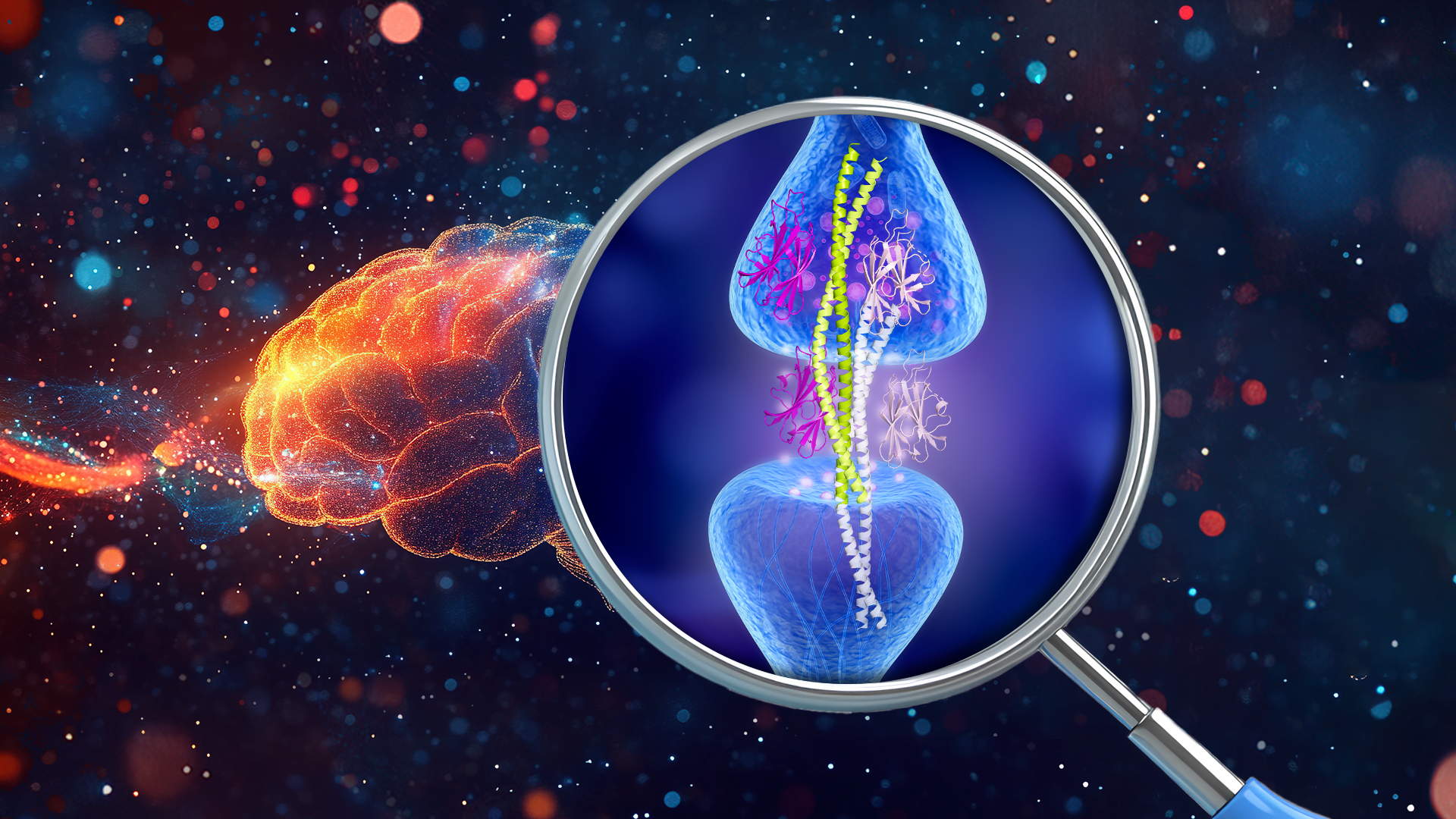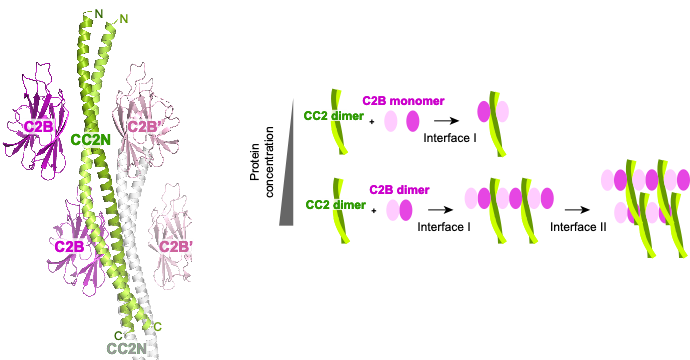In our brain, hundreds of billions of neurons form numerous synaptic connections, creating a sophisticated network essential for learning, memory, and emotion. At the heart of this network lies the synaptic active zone—the “transmission hub” where neurotransmitters are released. Composed of scaffold proteins like liprin-α, RIM, and ELKS, this nanoscale structure must precisely dock calcium channels with synaptic vesicles to ensure efficient signal transmission. Although liprin-α gene mutations have been identified in autism and epilepsy patients, their pathogenic mechanisms remain elusive.

An international research team led by Associate Professor Zhiyi Wei from the Department of Neuroscience, School of Life Sciences at the Southern University of Science and Technology (SUSTech), in collaboration with scientists from Germany and Sweden, has unraveled the atomic-level assembly mechanism of the liprin-α/RIM complex, a core component of presynaptic active zones. Their study reveals how “liquid-liquid phase separation” dynamically regulates neurotransmitter release. This breakthrough not only sheds light on the mystery of synaptic assembly but also links complex defects to neurodevelopmental disorders like autism and intellectual disabilities.
Their paper, titled “The liprin-α/RIM complex regulates the dynamic assembly of presynaptic active zones via liquid-liquid phase separation”, has been published in PLOS Biology.
Using structural biology techniques, the team determined the 2.75Å resolution structure of the liprin-α/RIM complex, uncovering a unique dual-interface interaction (Figure 1). In Interface I, disease-associated mutations disrupt complex assembly, hinting at direct links to neurological diseases. On the other hand, Interface II drives multimer formation, enabling the complex to form dynamic condensates via liquid-liquid phase separation. This mechanism allows liprin-α to act as a “molecular glue”, recruiting RIM proteins to form nanoscale “transmission units” on presynaptic membranes.

Figure 1. Structural basis for the presynaptic assembly of active zone core complex liprin-α/RIM
Using CRISPR-edited human neuronal models lacking all liprin-α genes, the researchers demonstrated that the liprin-α/RIM complex is critical for maintaining RIM protein levels and the pool of release-ready vesicles (Figure 2A). Furthermore, they found that the complex ensures precise calcium signal transduction through two approaches: specific protein compartmentalization (preventing excessive ELKS invasion into RIM condensates) and nanoscale coupling (maintaining close contact between calcium channels and vesicles) (Figure 2B).

Figure 2. The liprin-α/RIM complex regulates (A) synaptic function and (B) the phase separation-mediated calcium channel accumulation
Professor Stephan Sigrist of the Free University of Berlin, a leading scientist in studying synapses, wrote a commentary article in PLOS Biology, noting the findings “advance this model by providing the first structural and functional dissection of the Liprin-α/RIM interaction—a core scaffolding module—and linking it to phase separation and neurotransmission”. With technologies like super-resolution microscopy development, scientists might be able to directly observe the assembly process of these nanoscale structures in the future, which would promote deciphering the mystery of the brain’s efficient information processing.
Gaowei Jin, Joaquín Campos, and Yang Liu are the co-first authors of the paper. Associate Professor Zhiyi Wei, Dr. Claudio Acuna from the University of Heidelberg, and Professor Fredrik Sterky from the University of Gothenburg are the co-corresponding authors.
Paper link: https://journals.plos.org/plosbiology/article?id=10.1371/journal.pbio.3002817
Commentary article: https://journals.plos.org/plosbiology/article?id=10.1371/journal.pbio.3003201
Previous related news reports:
https://newshub.sustech.edu.cn/en/html/202002/23157.html
https://newshub.sustech.edu.cn/en/html/202103/30761.html
To read all stories about SUSTech science, subscribe to the monthly SUSTech Newsletter.
Proofread ByAdrian Cremin, Yilin ZHOU
Photo BySchool of Life Sciences